 ProteinsPlus
ProteinsPlus

The ProteinsPlus server offers a rich functionality related to protein structures. After uploading or selecting a PDB file, you can visualize the protein using the brand new NGL viewer, get an overview of small molecules bound and calculate various protein-related content. Protoss adds hydrogen atoms and optimizes the hydrogen bond network for you. Furthermore, it determines the tautomeric and protomeric states of the protein as well as small molecules contained. The DoGSiteScorer detects binding sites and estimates their druggability to name just two widely used services.
ProteinsPlus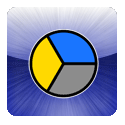 SMARTSviewer
SMARTSviewer

Visualization of SMARTS pattern
The SMARTSviewer provides a visualization for SMARTS strings. The depiction is based on structure diagrams as known from standard molecule visualization. Complex SMARTS pattern are splitted in more simple parts by extracting the recursive parts in separate structure diagrams. A legend explains the new graphic symbols as well as the meaning of the SMARTS in words.
SMARTSviewerPublikationen
- Schomburg, K., Ehrlich, H.-C., Stierand, K., Rarey, M. (2010) From Structure Diagrams to Visual Chemical Patterns . Journal of Chemical Information and Modeling, 50(9):1529-1535.
Software Server
The AMD Software Server is the central download plattform for all our tools. After registration you get access to several programs related to cheminformatics and structure-based design. The software is for free for academic use and evaluation purposes.
Software Server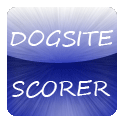 DoGSiteScorer (replaced by ProteinsPlus)
DoGSiteScorer (replaced by ProteinsPlus)

DogSiteScorer is an automated pocket detection and analysis tool which can be used for protein assessment. Predictions with DoGSiteScorer are based on calculated size, shape and chemical features of automatically predicted pockets, incorporated into a support vector machine for druggability estimation.
Note that the DoGSiteServer is no longer runing. The functionality is available as part of our new ProteinsPlus Server.
DoGSiteScorer (replaced by ProteinsPlus)Publikationen
- Volkamer, A., Kuhn, D., Rippmann, F., Rarey, M. (2012) DoGSiteScorer: A web-server for automatic binding site prediction, analysis, and druggability assessment . Bioinformatics, 28(15):2074–2075.
- Volkamer, A., Kuhn, D., Grombacher, T., Rippmann, F., Rarey, M. (2012) Combining Global and Local Measures for Structure-Based Druggability Predictions . Journal of Chemical Information and Modeling, 52(2):360-372.
- Volkamer, A., Griewel, A., Grombacher, T., Rarey, M. (2010) Analyzing the Topology of Active Sites: On the Prediction of Pockets and Sub-pockets . Journal of Chemical Information and Modeling, 50(11):2041-2052.
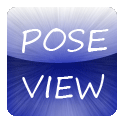 PoseView (replaced by ProteinsPlus)
PoseView (replaced by ProteinsPlus)

PoseView generiert automatisch zweidimensionale Diagramme von Komplexen mit Schwerpunkt auf dem Interaktionsmuster zwischen Ligand und Protein. Interaktionen zwischen Molekülen werden durch ein eingebautes Interaktionsmodell geschätzt, welches auf Atomtypen und einfachen geometrischen Kriterien basiert. Die Qualität der resultierenden Diagramme ist vergleichbar mit handgezeichneten Beispielen aus Lehrbüchern und wissenschaftlichen Veröffentlichungen.
PoseView @ PDB
Publikationen
- Stierand, K., Rarey, M. (2010) Drawing the PDB - Protein-Ligand Complexes in two Dimensions . Medicinal Chemistry Letters, 1(9):540-545.
- Stierand, K., Rarey, M. (2007) From Modeling to Medicinal Chemistry: Automatic generation of two-dimensional complex diagrams . ChemMedChem, 2(6):853-860.
- Stierand, K., Maaß, P. C., Rarey, M. (2006) Molecular Complexes at a Glance: Automated Generation of two-dimensional Complex Diagrams . Bioinformatics, 22(14):1710-1716.
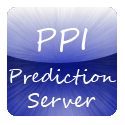 PPI-Server (replaced by ProteinsPlus)
PPI-Server (replaced by ProteinsPlus)

Der PPI-Server klassifiziert eine Protein-Protein-Interaktion mit Hilfe eines maschinellen Lernverfahrens in biologische Komplexe (transient oder permanent) oder Kristallartefakte. Hierzu werden zwei Deskriptoren verwendet, der hydrophobe Effekt, der mittels HYDE berechnet wird, und einem Faktor, der die Symmetrie des Protein-Protein-Interfaces wiedergibt.
PPI-Server (replaced by ProteinsPlus)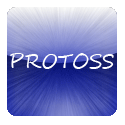 ProToss (replaced by ProteinsPlus)
ProToss (replaced by ProteinsPlus)

ProToss wurde zur automatisierten Vorhersage von Wasserstoffatomen in Protein-Ligand-Komplexes entwickelt. Es ermöglicht sowohl zu einer Komplexstruktur fehlende Wasserstoffe hinzuzufügen als auch Koordinaten vorherzusagen sowie sinnvolle Tautomer und Protonierungszustände zu generieren.
ProToss (replaced by ProteinsPlus)Publikationen
- Bietz, S.; Urbaczek, S.; Schulz, B.; Rarey, M. (2014) Protoss: a holistic approach to predict tautomers and protonation states in protein-ligand complexes . Journal of Cheminformatics, 6(12):1-12.
- Lippert, T., Rarey, M. (2009) Fast automated placement of polar hydrogen atoms in protein-ligand complexes . Journal of Cheminformatics, 1(13)
Offline
 ChemBioNavigator
ChemBioNavigator

Der ChemBioNavigator dient zur Visualisierung des chemischen und biologischen Raumes eines Sets von kleinen Molekülen; dabei liegt der Focus auf den physicochemischen Eigenschaften. Die unterschiedlichen physicochemischen Eigenschaften des Sets können gegeneinander aufgetragen werden, und es werden Informationen zu einzelnen Datenpunkte über Links, die zu den originalen Datenquellen führen, zur Verfügung gestellt. Desweiteren kann nach strukturell ähnlichen Molekülen per Substruktursuche oder Ähnlichkeitssuche gesucht werden. ACHTUNG, der ChemBioNavigator ist zurzeit aufgrund von Kompatibilitätsproblemen zum OpenPHACTS API ausgeschaltet.
ChemBioNavigatorPublikationen
- Stierand, K., Harder, T., Marek, T., Hilbig, M., Lemmen, C., Rarey, M. (2012) The internet as scientific knowledge base: Navigating the chem-bio space . Molecular Informatics:543-546.